Enhancing your outdoor living space with a picturesque pergola can provide beauty, shade, and increased enjoyment of the outdoors. If you’re planning to add a new pergola, one of the first decisions is whether to build a traditional stationary style or go for an adjustable louvered design. While both pergola types have appeals, the louvered option offers some unique advantages.
In terms of appearance, the traditional pergola embodies a classic, timeless look with its crisscrossed beam roof and open-slatted construction. Louvered pergolas exude a more contemporary sleekness with their series of angled overhead louvers. When it comes to the roof structure itself, the traditional pergola has spaced out wood slats or rafters leaving the roof partially open to the sky. Meanwhile, the louvered pergola incorporates rows of closable aluminum or wood louvers that can tilt incrementally.
Major Difference Adjustability
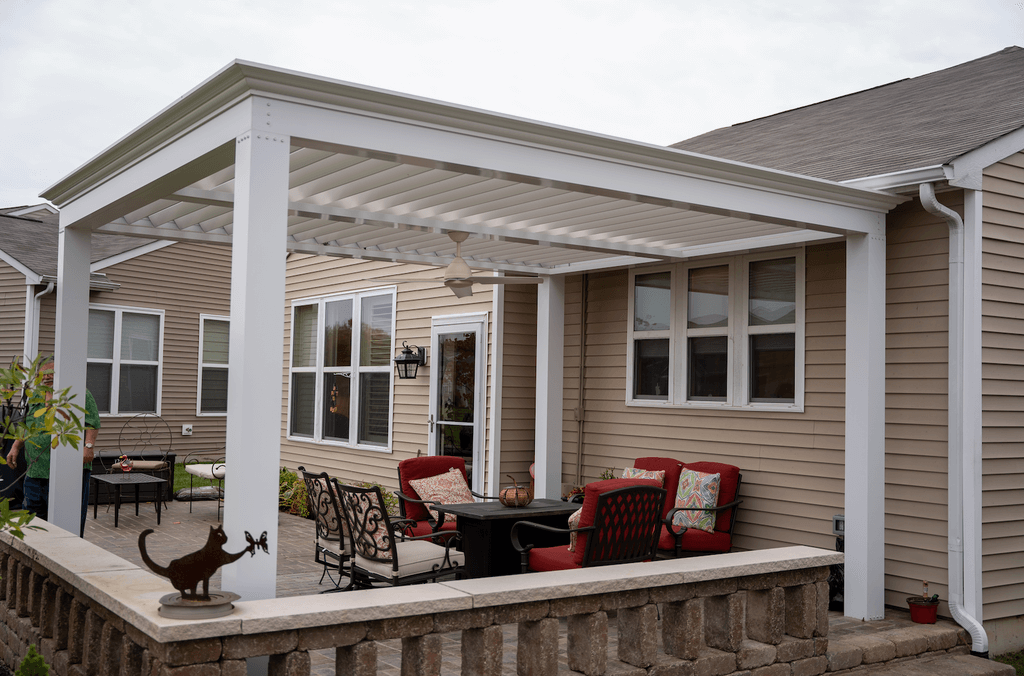
This leads to a major difference between the louvered and traditional pergolas – adjustability. One of the main benefits of the louvered design is its capacity to regulate sun and shade. Louvers can rotate to block or filter sunlight to your exact liking, controlling both brightness and temperature underneath the structure. Traditional stationary pergolas offer fixed shade based on their design. The shade is permanent but can be patchy and bright between roof slats.
Shade Coverage
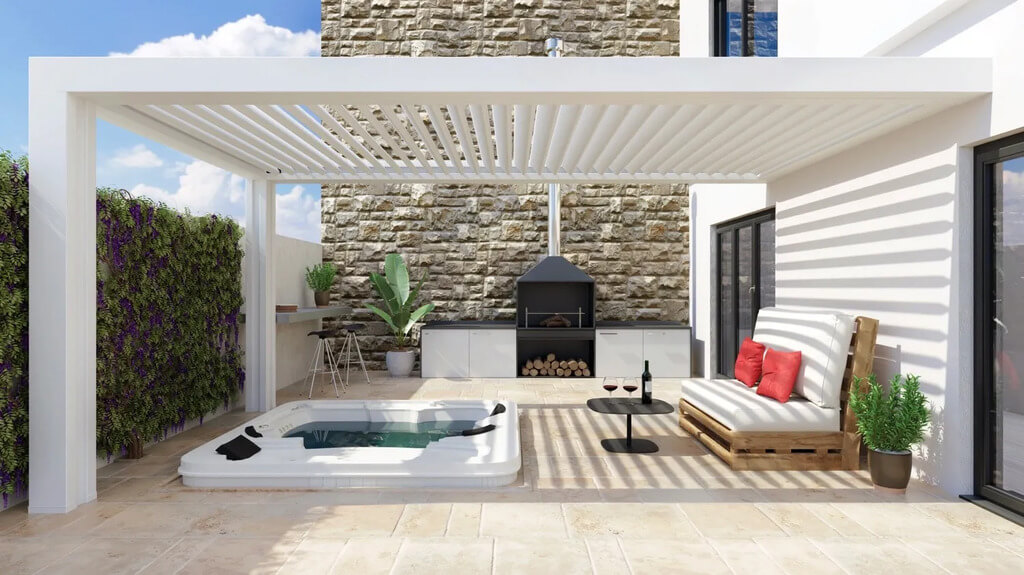
Traditional has limited shade from spaced-out roof slats while Louvered can provide dense shade by fully closing louvers.- Light Filtration: Traditional has bright but patchy shade from roof gaps while Louvered can filter sunlight smoothly from closed to open.
Furthermore, louvers enable superior weather protection when needed. By fully closing the louvers, you can block rain, snow, or excessive wind under the pergola. This can allow you to enjoy the space during light precipitation or high winds that would otherwise make a traditional pergola unusable. The fixed, open nature of a traditional pergola provides minimal shelter from the elements.
When rain or snow begins falling through the pergola roof slats, you’d likely need to retreat back indoors or face getting wet. But with an adjustable louvered roof, you can continue relaxing in your outdoor living space by simply tilting the louvers to the closed position when needed. This added weather protection and adaptability is a major advantage of louvered pergolas.
Optimize Sunlight
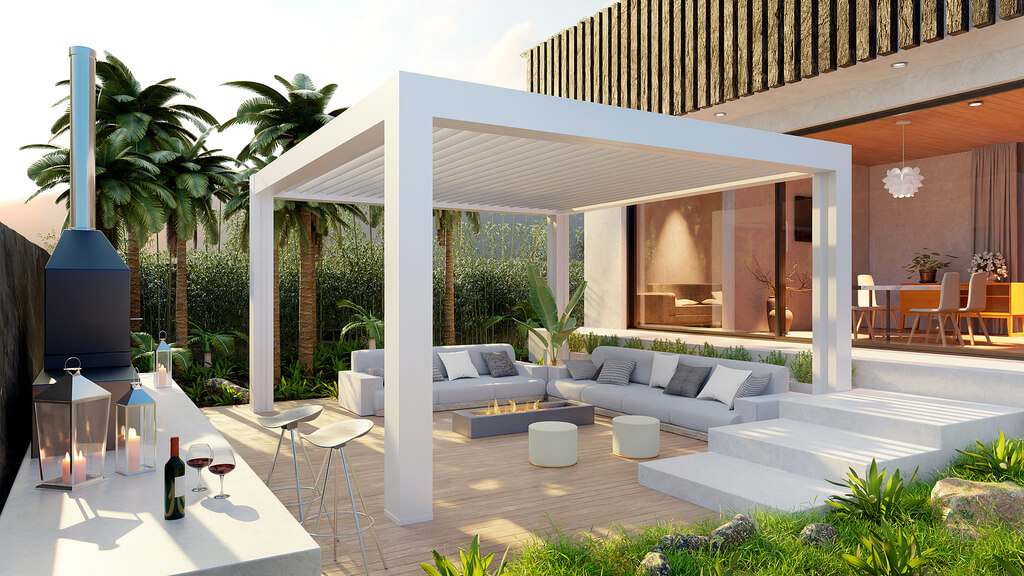
A louvered pergola offers homeowners the ability to optimize sunlight, shade, and temperature, unlike a stationary pergola. By adjusting the angles of the overhead louvers throughout the day, you can control how much sunlight filters through to create custom shade tailored to your needs. Fully closed louvers can block intense midday sun to keep the space considerably cooler on sweltering hot days. Tilting them parallel to the sun’s rays provides dappled shade without completely blocking views of the surroundings. Partially open louvers allow fresh air flow while still limiting sunlight exposure.
Stargazing
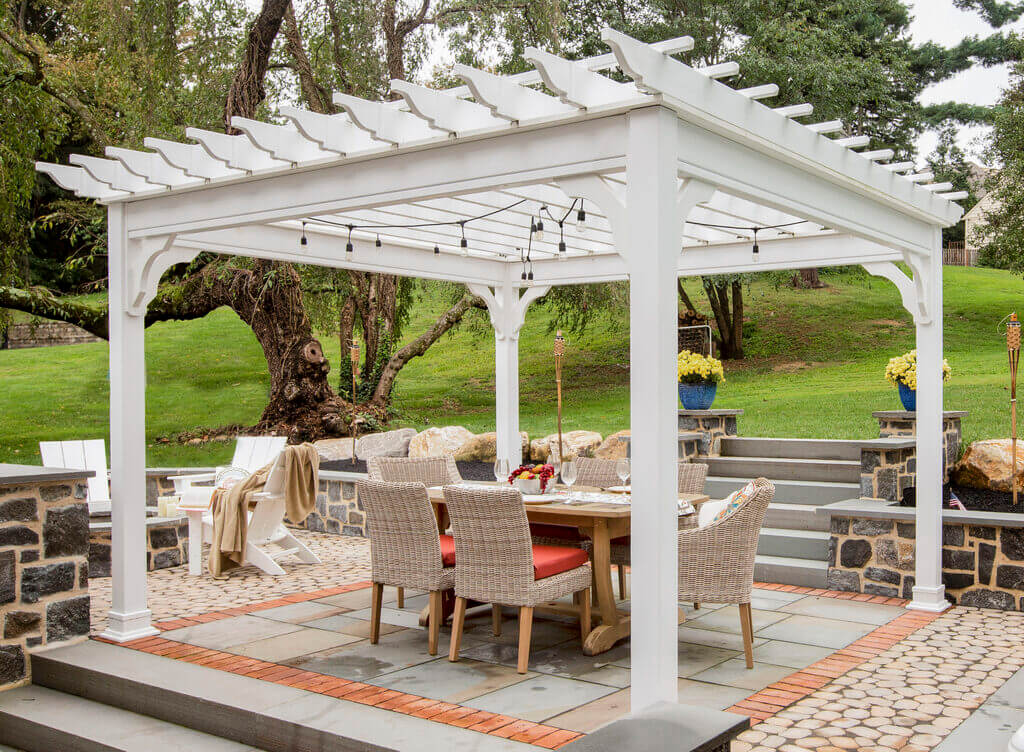
At night, reopening the louvers enables stargazing or moon viewing directly from the comfort of the pergola. Beyond dynamic shade control, closing the louvers during intense thunderstorms or heavy snow creates a protective barrier from precipitation that fixed pergolas simply can’t match. This advanced level of weather and sunlight modulation promotes greater utilization and enjoyment of the space year-round. Rather than being subjected to the fixed whims of a stationary pergola design, a fantastic 12×12 pergola can empower homeowners to actively and precisely dictate the under-pergola experience at any given moment. If full flexibility in controlling your outdoor ambiance is a priority, a louvered pergola is undoubtedly the optimal choice.
Traditional Pergolas
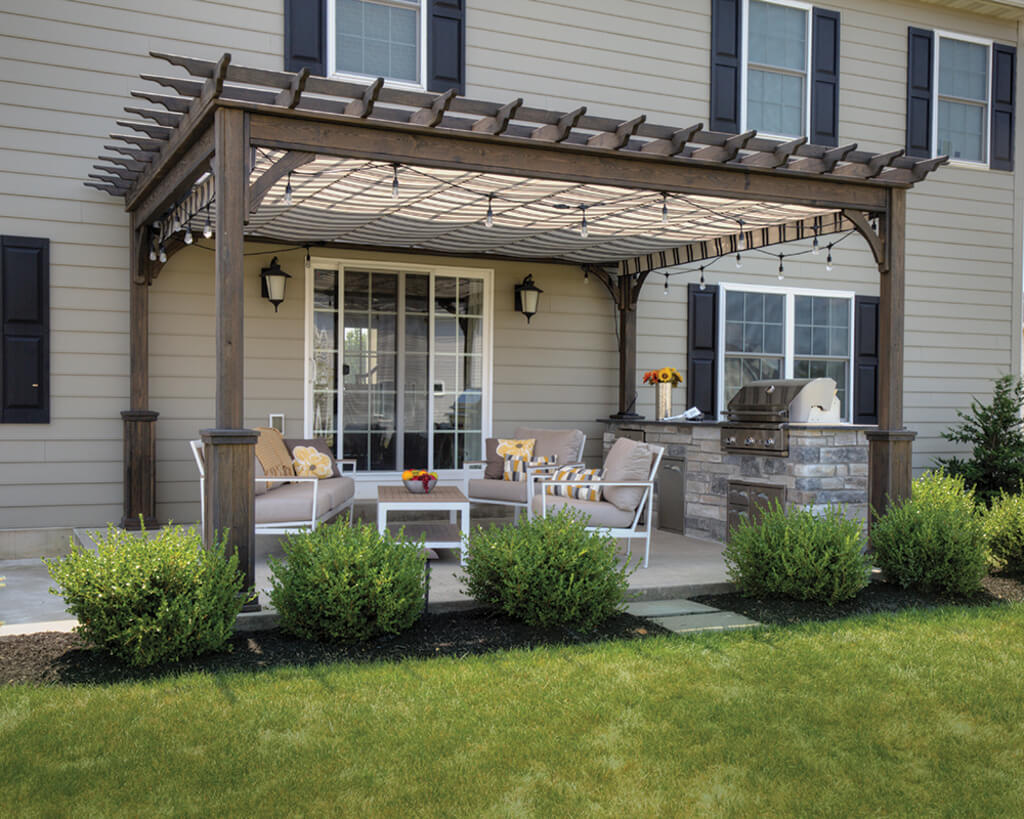
Structurally, traditional pergolas are characterized by their solid crisscrossing beams or framed rafters that form the roof system. These sturdy beams provide a timeless and rustic aesthetic, offering a visually appealing blend of shade and open space. The traditional approach to pergola construction has its charm, but it also comes with certain maintenance requirements. In the case of traditional wood pergolas, these roof beams are typically made of natural wood, which adds to their traditional allure. However, this natural material is susceptible to weathering and requires periodic maintenance to ensure its longevity.
To keep traditional wood pergolas looking nice and strong, you need to do some regular chores like sanding, staining, and sealing. These activities protect the wood from the sun, rain, and wetness that can harm it. If you don’t take care of it properly, the wood might change color, get rough, or even start to rot over time. So, if you own a traditional wood pergola, you should make sure to do these maintenance tasks regularly to make sure it stays in good shape and looks great in your outdoor space.
On the other hand, louvered pergola systems present a modern and versatile alternative. These systems are characterized by a robust frame that houses the mounting and rotation mechanism for a series of adjustable louvers. The beauty of louvered systems lies in their flexibility; they allow homeowners to customize the amount of shade, ventilation, and sunlight they desire at any given moment. Louvered systems are typically made of durable materials such as aluminum, which is known for its resistance to rust and corrosion.
Maintenance
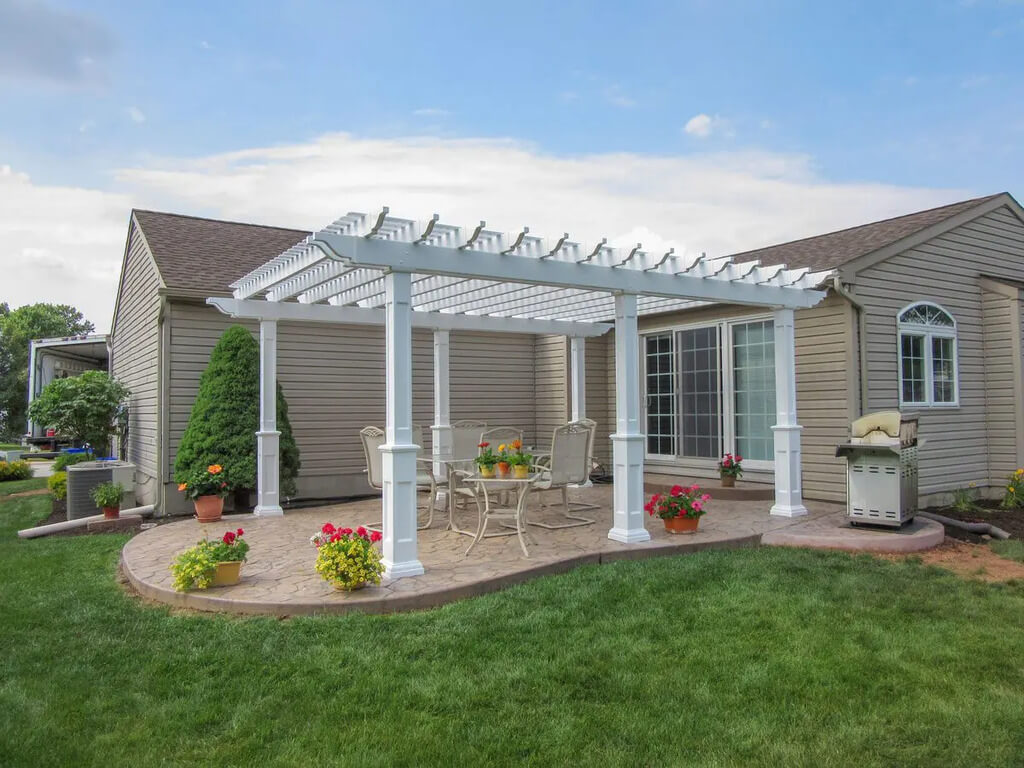
Maintenance for louvered pergolas is generally less demanding compared to traditional wood pergolas. The primary maintenance task for louvered systems is occasional louver lubrication to ensure smooth and effortless rotation. This minimal maintenance requirement makes louvered pergolas an attractive option for those seeking a low-maintenance outdoor living solution.
While traditional wood pergolas offer a classic and timeless appeal, they do demand regular maintenance to preserve their beauty and structural integrity. On the other hand, louvered pergola systems provide a contemporary and adaptable alternative with minimal maintenance needs, making them a convenient choice for homeowners looking to enhance their outdoor living spaces with style and functionality.
Final Words
So here is the conclusion of louvered vs. traditional pergolas and for those seeking classic and timeless styling, a stationary traditional pergola may be the optimal choice. But homeowners wanting modern design along with superior sun control, weather protection, and sustainability benefits will likely prefer investing in a louvered pergola. Carefully weighing the pros and cons of adjustability, function, and aesthetics will help you make the right choice as you create your ideal outdoor oasis.
In Case You Missed It!

